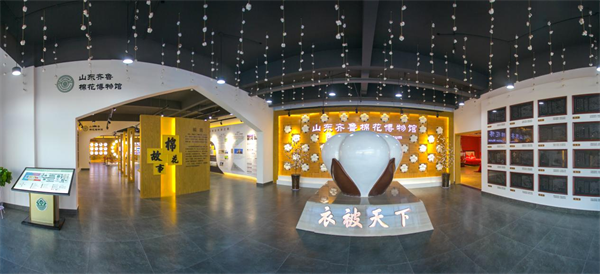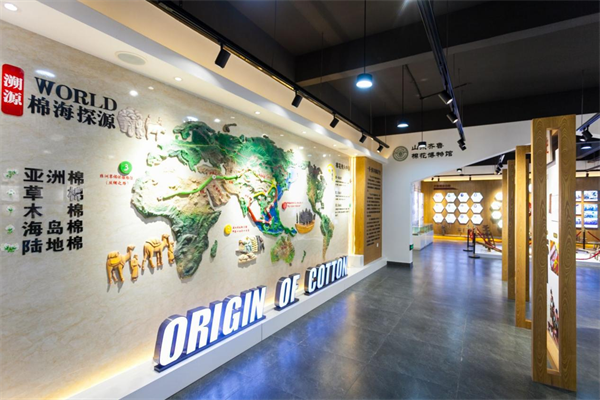Discovering rich heritage of cotton at Shandong Qilu Cotton Museum
The Shandong Qilu Cotton Museum in Xiajin county explores the rich tapestry that is the history of cotton.
A mesmerizing sculpture of a plump cotton boll greets visitors at the entrance, a testament to the warmth and universal love that cotton represents.

Stepping into the Shandong Qilu Cotton Museum, visitors are greeted with an eye-catching sculpture of a plump cotton ball. [Photo by Deng Meiping for chinadaily.com.cn]
A highlight of the museum is the display of 16 detailed rubbings from the Qianlong Emperor (1711-99) of the Qing Dynasty's (1644-1911) commissioned imperial cotton paintings.
These artworks meticulously illustrate the 16 stages of cotton production and processing, ranging from the selection of seed varieties to irrigation, plowing, and harvesting.
Accompanying each painting is an informative text and a seven-character poem, vividly bringing each step to life. This exclusive collection is one of China's few comprehensive cotton atlases.
Spanning 10 meticulously curated thematic areas, the museum takes visitors on a chronological and geographical journey through cotton's evolution in China, with a particular focus on Xiajin county's contributions. The cotton history section delves into the plant's origins and its introduction to China, cleverly intertwining it with the contemporary Belt and Road Initiative.

A display revealing the origins of cotton. [Photo by Deng Meiping for chinadaily.com.cn]
Going back to the Yuan Dynasty (1271-1368), the museum narrates how cotton cultivation flourished in the Yangtze River basin and how Shandong province embarked on its remarkable 700-plus-year journey in cotton farming. Xiajin county's significant role in cotton cultivation during the Ming Dynasty (1368-1644) is well documented and celebrated at the museum.
Boasting a collection of over 400 exhibits, the museum comprehensively covers the cotton industry's vast scope. From the intricacies of breeding, planting, and harvesting to the nuances of distribution, processing, and textile applications, the museum offers an unparalleled insight into the world of cotton. (Edited by Cai Liting)








